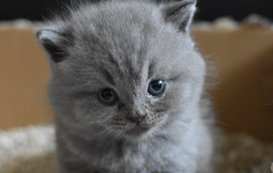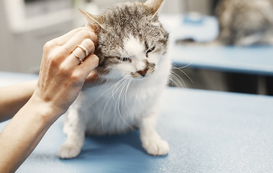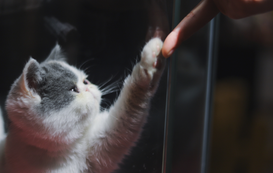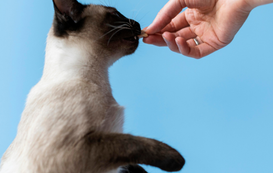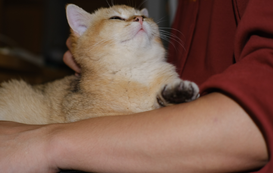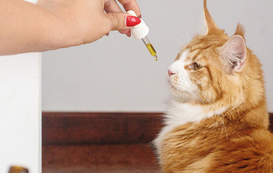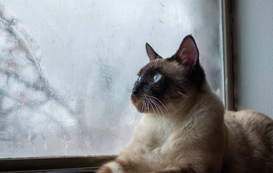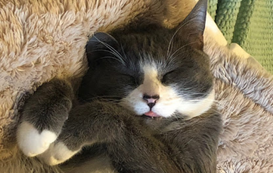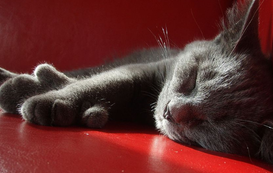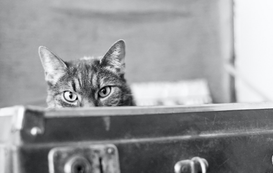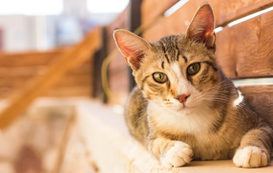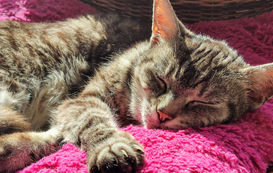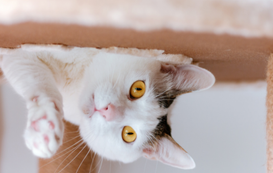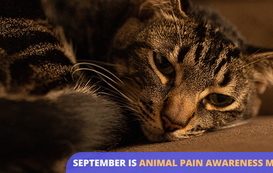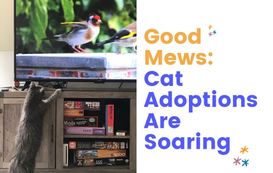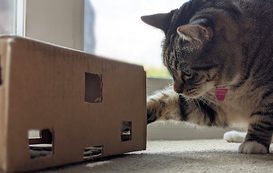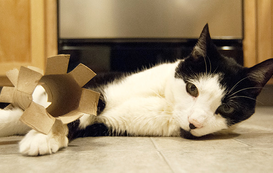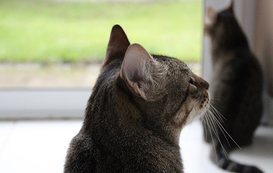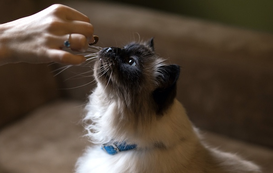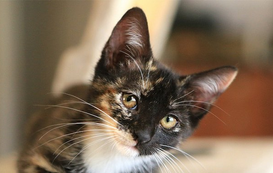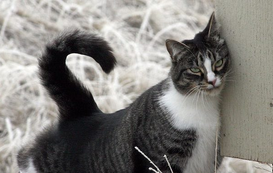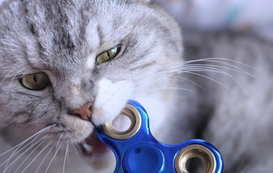How to Handle a Cat Attack and What to Do to Prevent It
We’ve all been there, right? There’s a cat that you want to love up on, but he or she does not feel the same way. Maybe it’s your Aunt Mabel’s tuxie cat, Mitzy, or your neighbor’s cats, Fluffy and Rat Tail. Maybe it’s the new cat you adopted. Regardless of who the cat lives with, it’s important for every parent and sitter to know the warning signs, why cats attack, how to attempt to avoid it, how to handle the attack, and what to do if you’ve been attacked.
Warning Signs:
Since cats are nonverbal, we need to be able to pick up on their cues. Cues from cats include angry meowing (similar to a howl), hissing, growling, dilated pupils, airplane ears, rigid bodies, twitching tails, slapping with claws out, and the ever frightening pull back lunge mode. If the cat exhibits any of these, it’s best to assess the situation and figure out a plan of action that works best.
Why Cats Attack:
According to the ASPCA, cats can attack for a multitude of reasons. They list the aggressions as: fearful or defensive, territorial, play, redirected, pet induced, pain induced, maternal, and idiopathic.1
Fearful or Defensive
Fear or defensive aggression occurs when a cat feels like they are trapped and cannot escape.
Territorial
ASPCA says, “Cats’ territorial aggression is usually directly toward other cats, but it can be directed toward dogs and people too. A cat can show territorial aggression toward some family members and not others and toward some cats but not others. Cats mark their turf by patrolling, chin rubbing and urine spraying. They may stalk, chase and ambush a targeted intruder while displaying offensive body postures, including hissing, swatting and growling. Some cats take a slow and steady approach in their stalking, while others immediately and aggressively give chase. A cat’s perceived territory could be the entire house or part of it, the yard, the block or the neighborhood.”1
Play
According to the ASPCA, “Play aggression is the most common type of aggressive behavior that cats direct toward their owners. It involves typical predatory and play behaviors, including stalking, chasing, attacking, running, ambushing, pouncing, leaping, batting, swatting, grasping, fighting and biting. It’s believed that through play with each other, young cats learn to inhibit their bites and sheath their claws when swatting. The degree to which individual cats learn to inhibit their rough play varies, and those who were orphaned or weaned early might never have learned to temper their play behavior. Other factors that can contribute to play aggression are long hours spent alone without opportunities to play, and if pet parents encourage their cats to chase and attack people’s hands and feet in play.”1
Redirected
Redirected aggression is when the cat gets all worked up over something but then takes it out on you. For example, the cat sees a bird outside and starts getting into the position. The butt starts wiggling, and the mouth starts chattering. Except they can’t get to the bird so they have all of this pent-up aggression. Who is the next person they see? Mom! They have to get the anger out somehow and bam! Mom gets a bite on the hand if she’s coming up to see what the cat is doing. The cat will not go and seek out someone to attack. It’s more of a transference situation.
Pet Induced
(This one has happened to me many times.) It’s really as simple as it sounds. This happens when you pet too much, and they become irritated. ASPCA says, “This type of aggression isn’t well understood, but behaviorists think that physical contact, like stroking, can quickly become unpleasant if it’s repeated over and over. Repetitive contact can cause arousal, excitement, pain and even static electricity in a cat’s fur.”1 Think of it like, if you’re getting a massage and the massage therapist doesn’t keep moving, it starts to feel dull, or worse – painful.
Pain Induced
Like pet induced aggravation, this is just as simple as it sounds. Think about it this way: “hurt people hurt people.” Well, so do cats! If they aren’t feeling well, they’re going to act out. The main thing is though, if it’s determined to be pain induced aggression, you need to get to the root of the issue and find out what is causing Fluffy pain.
Maternal
It’s why you don’t mess with a mama. If a mom cat feels like you’re threatening her babies, you will likely not have much of an arm left.
Idiopathic
This one makes me sad. According to the ASPCA, “The classification of idiopathic aggression includes any type of aggression whose cause can’t be determined or explained through behavior history or medical exam. Cats with this type of aggression can attack their owners violently. They may bite repeatedly and remain in an aroused state for long periods of time. Redirected aggression must be closely considered and ruled out as a possible cause before a diagnosis of idiopathic aggression is made. These cats are dangerous, and pet parents of such cats should carefully assess their quality of life, as well as the safety of those around them.”1
How To Thwart An Attack:
- If the cat seems to be scared or threatened, leave the room and let them be.
- If the cat seems to be angry and defensive, try using a toy as a distraction. If that doesn’t work, leaving the situation can often make a world of difference. And if all else fails, use something bigger as a distraction, such as a loud sound or throw an object (not at the cat!). Often times loud noises can break their anger trance.
- Leave the area of which the attack is taking place. If you cannot leave, let the cat leave. Feeling trapped only raises the stress levels.
- Isolate the cat in another room so they can have a time out to relax.
What To Do If You’re Attacked:
- DO NOT HIT THE CAT. This will only enrage the cat more. Make a loud noise or throw something (at a wall) as a distraction.
- Leave the area of which the attack is taking place. If you cannot leave, let the cat leave. Feeling trapped only raises the stress levels.
- Isolate the cat in another room so they can have a time out to relax. If you cannot get the cat to another room, try herding them there using a towel as a barrier between you and the cat. If that doesn’t work, you can throw the towel over the cat to scoop them up and relocate them to another room. Please keep in mind that picking up an already angry cat is just going to make them more upset, so only do this if absolutely necessary.
- As a last resort, you may need to restrain the cat by scruffing it in order to stop the attack and move the cat to an isolated location. Please keep in mind that it is never good to hold an adult cat solely by its' scruff. Do your best to support the body weight with your free arm. Cat skin loses elasticity as they age, so scruffing a cat improperly can seriously injure them.
If a Cat Bites or Scratches You:
- Resist the urge to pull away fast. Our first reaction is to try to quickly pull away because - ow! But cats will look at this as prey behavior and may clasp on all the tighter. The jarring motion of pulling your arm back while a tooth or claw is lodged inside will also just make the wound worse. Instead, move away very slowly, and avoid making eye contact. This calm retreat will help the cat realize that you are not a threat to them and (hopefully) they will decide to back down.
- If you’re scratched, be sure to wash the site immediately as it could get infected due to the litter / fecal matter on their claws.
- If you’re bitten by a cat, make sure to clean the wound immediately and go to urgent care for treatment. Cat bites are deep and vicious, even though they don't always look it. They have bacteria in their mouth that acts as a defense mechanism against predators. If left untreated, cat bites can get very infected.
A Personal Account of an Attempted Attack:
I was sitting a cat a few weeks ago who got increasingly angrier each visit. Her mom went away for about 10 days, and I only stopped by every other day. The cat mom didn’t ever have an issue doing it this way so she thought there was no problem. On day 1, I got the sweet cat. She was playful, wanted head scratches, wanted to be brushed and wanted to play. “Great!” I thought. “This is going to be easy.” Well, on day 4 of mom being away, day 2 of our visits, she was territorial of her food and litter box, which were in the kitchen. She would howl and hiss at me. However, once we walked into the living room, she was the sweet, playful girl again. That all changed on day 6 of mom being gone, day 3 of our visits. When I walked in, she had anger peed and pooped outside of her box. When I was trying to clean that all up, she came up behind me howling and hissing.
I felt threatened so I grabbed a towel from the fridge door and tried to use it as a distraction. It worked for a hot second as I tried to get her to follow me into the bathroom where I could at least sequester her while I cleaned up the mess. She refused to follow me any further and continued to howl. Her pupils dilated, and the howls became more aggressive and frequent. At this point, I just wanted to walk past her. I very sternly and loudly kept calling her name and telling her “No!” That did nothing.
She started to pull back and got into a lunge position, and at that point, I threw the towel to distract her. It worked, and I was able to get past her, sit down, and recoup. After I got my wits about me, I went back into the kitchen to continue cleaning up the pee she got everywhere. She came back into the kitchen and started howling and hissing. I ignored her this time, and she finally walked away.
We didn’t have any playtime that day as I was genuinely nervous. I alerted her mom to the visit’s events: her territorial behavior, hissing, and anger peeing and pooping. I recommended adding more visits as well as playing background noise to soothe her.
I also changed my approach a little bit. The next two days, I greeted her kindly and turned on the TV immediately. I would sit on the couch with my laptop giving her space to look out the door and enjoy some fresh air. After 30 minutes, I would see how she was feeling. If she wanted pets, she got pets. If she wanted to be left alone, I went into the kitchen. When it was time to refill her food dispenser, I would move it from her known territory of the kitchen and into the living room. By changing the location, it showed her that she didn't need to protect it so fiercely. The food dispenser would stay there until the end of the visit when I would put it back into the kitchen (often times with my foot, just in case she felt like getting a swipe in).
Luckily, these client-approved tactics and the increased frequency of visits remedied her behavior. And at my last visit, she began meowing happily when she saw me through the window. Then to my delight, when I opened the door, she greeted me with happy meows, affection, and wanting pets. Obviously, we’ve been best friends ever since.
A cat attack can be terrifying. Sometimes they scar people for life. Knowing how to handle such an event will be beneficial for everyone (two and four legged) involved. Meowtel’s sitters are experienced, passionate, and have experience with cat aggression. While no one loves a cat attack, our sitters can help defuse the situation if it happens. Find a sitter today who can take the best care of your cat.
- ASPCA, Hetts, Suzanne. (1999). Pet Behavior Protocols. Lakewood, CO: AAHA Press, https://www.aspca.org/pet-care/cat-care/common-cat-behavior-issues/aggression-cats








